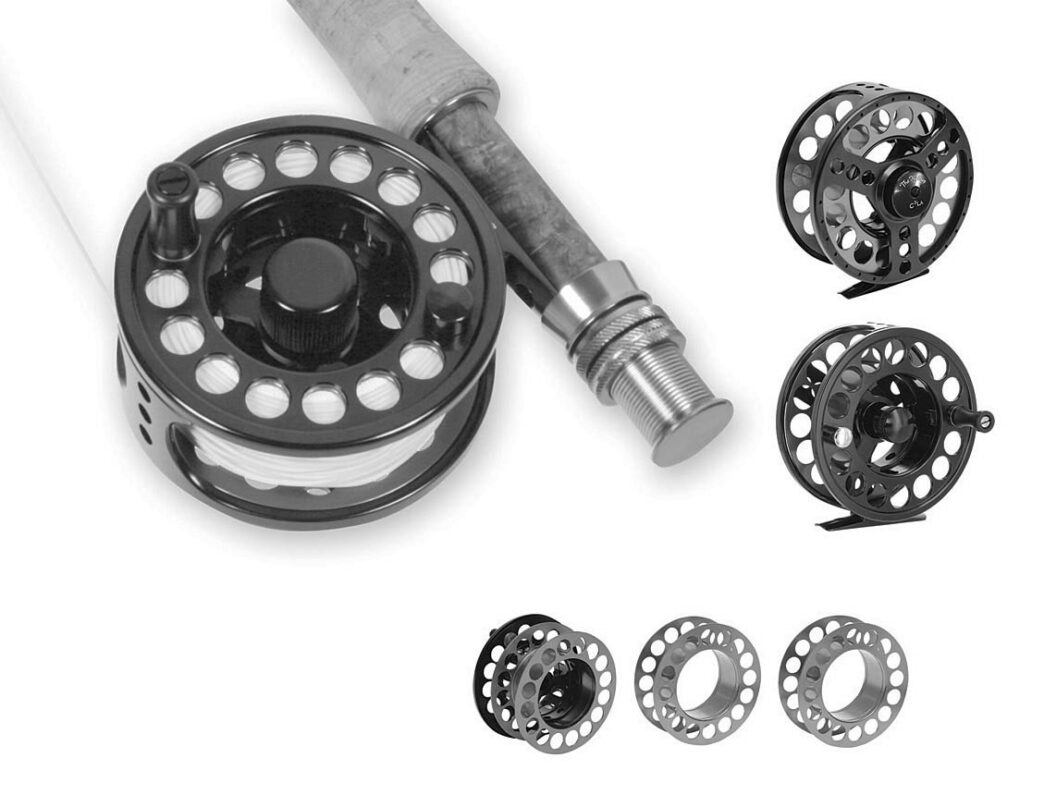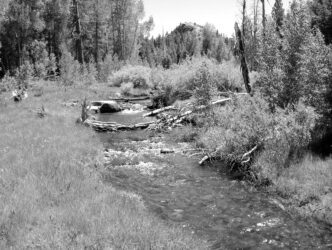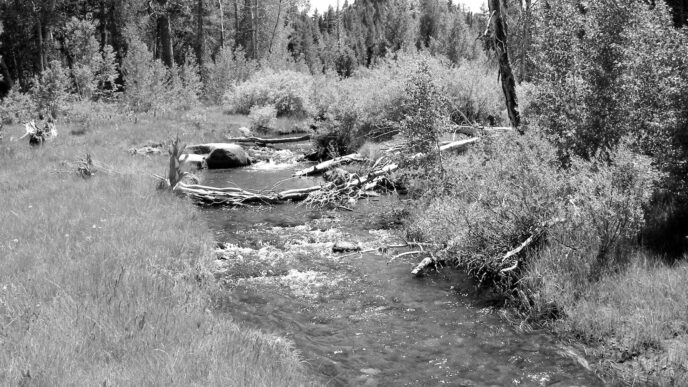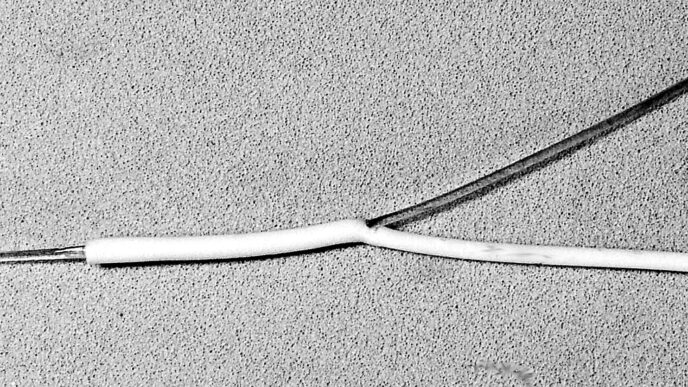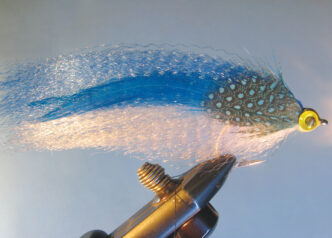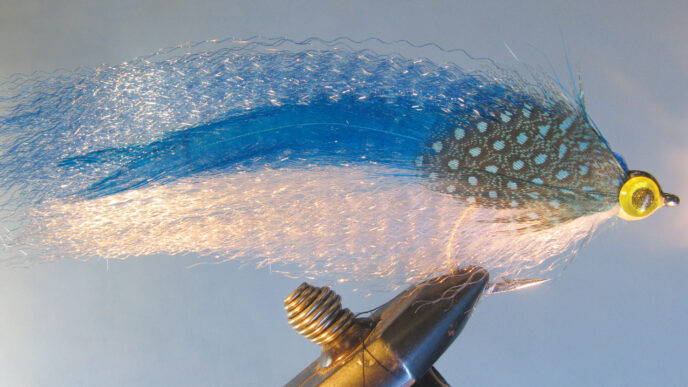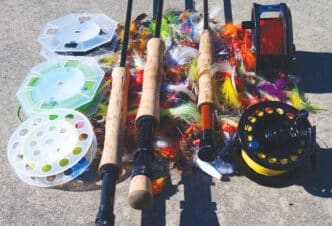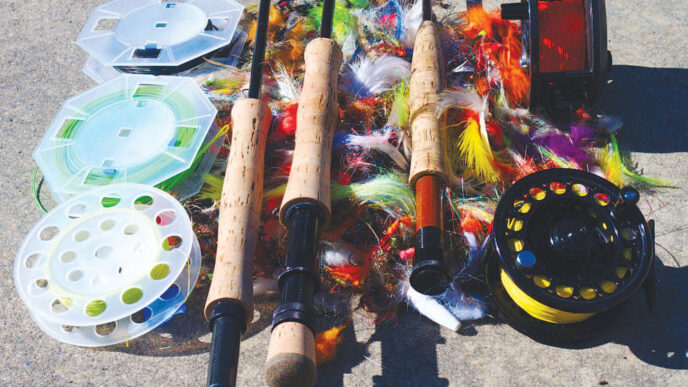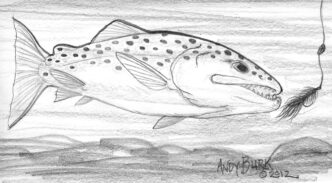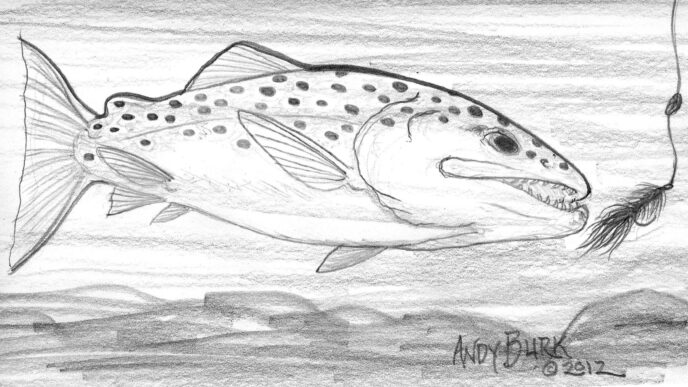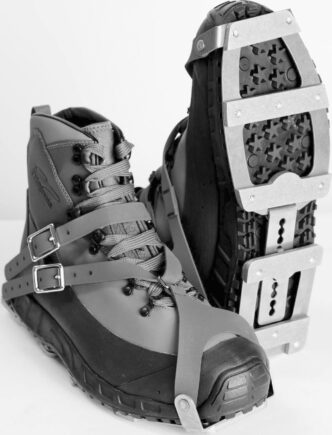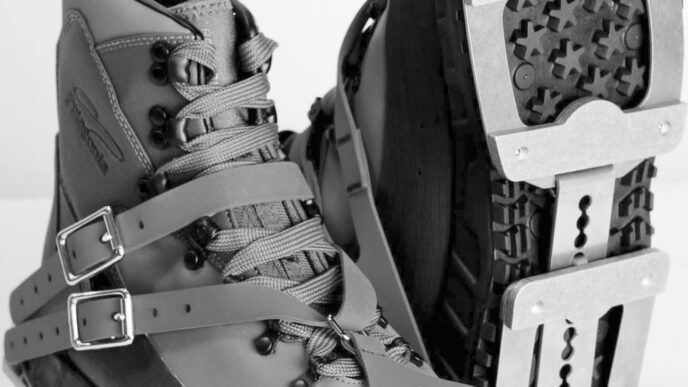Back in the day, whenever that was, but let’s call it prior to 1990, there was a significant difference between the best gear and the inexpensive stuff. Inexpensive rods, reels, and waders, no matter what brand name was on them, performed only adequately, at best. Today, it’s hard to find a bad fly rod at any price or a “value-priced” reel that doesn’t spin nicely, have a decent check or drag, or hold together when tested on most fish. Even inexpensive breathable waders are a step up in fit and comfort from the top-end heavy-rubber/canvas or neoprene stuff we wore 30 years ago, none of which were free from problems.
The reasons for all this decent inexpensive gear clearly include some combination of increasing prices for top-end American products, a troubled U.S. economy that has made many anglers penny conscious and driven manufacturers to find less expensive sources, and that pesky Asian technical ingenuity at reverse-engineering things they can build with labor that costs less per month than the retail price of a pair of running shoes.
Even as top U.S. manufacturers work hard to produce better and better gear and to impress upon us that added value resides in an established and trusted company name, contemporary consumers are less inclined to believe that they need a product with a traditional brand. A number of new anglers, unimpressed by tradition, along with some longtime anglers who rebel at high prices, simply want something that works, looks good, and doesn’t cost a bundle. The major U.S. manufacturers all offer lower-priced “value” rods, but only a few — Sage, Loomis, and Scott come to mind — continue to make them in the United States. Most of the rest of the value-priced rods we buy are sourced abroad.
The top American-built reels, of course, like the top American rods, still lead the way in technical sophistication, but apart from them, most fly reels are built in Asia. Hardy — and what brand could be more traditional and time-honored than that? — builds a few rods and reels in Alnwick, but the majority of its gear comes from Korea. Orvis, a champion of the American (OK, Eastern American) outdoor tradition, with a rod-manufacturing plant in Vermont, has gone offshore for its new Clearwater line of rods, but it has long sourced reels, waders, and clothing outside the United States.
Just about everything sold by Cabela’s and Bass Pro Shops under their own brand names is sourced outside of the United States. And with the notable exception of Simms, I can’t think of a U.S.-built wader — and even Simms goes offshore for their value-priced Freestone models.
What’s clear is that traditional American-made products with recognizable brand names are no longer an angler’s only or perhaps even best choice. That this is so was driven home to me for the first time a couple of years ago when I read a post on a popular angling bulletin board by a guy wondering whether he should buy a top-line Sage or a rod by Temple Fork Outfitters. He didn’t seem to be concerned with cost, simply with performance, and somehow put the industry leader in the same hat as an offshore-built brand that sells for half as much. I guess we shouldn’t be surprised. “Made in Japan” was a joke when I was a kid. Now we pay gobs of dough for Japanese electronics, and of course, they’re a world leader in hooks, leaders, and tippet material.
This change in perception won’t prevent anglers all over the world from lusting after the newest, most technically sophisticated Sage or Winston rod, Tibor or Nautilus reel, or other top-end U.S. product. There will always be a strong market for the best gear made by the names that have long defined and continue to set the direction for fly fishing. But Asian-sourced gear — good gear — is here to stay.
Intriguingly, the angler isn’t alone in having options. A few fly shops — like their bigger cousins, Orvis, L. L. Bean, Bass Pro Shops, and Cabela’s — are going direct to Asian manufacturers to source, import, and brand some their own gear. The idea of a house brand isn’t new. You would be hard pressed to find any large grocery store chain, for example, that didn’t have house-branded canned goods. If private-label outside sourcing works in the grocery business, why not in fly fishing?
Retail-shop branding of outsourced products not only provides good profit margins, but if shop staff were involved in working on product development, they’ll have a stake and pride in what they sell. In an environment where the displayed inventory of many fly shops seem depressingly similar — a phenomenon some wags call “McFlyShops” — branding your own gear is also a way to present something unique. A couple of California’s biggest players — I probably should say the country’s biggest players who’re based in California — are doing just that. This column, in essence, extends last issue’s presentation of new products by focusing on the product branding now underway by The Fly Shop in Redding and Leland Fly Fishing Outfitters in San Francisco.
The Fly Shop
Mike Michalak, founder and owner of The Fly Shop in Redding, has never been a shrinking violet when it comes to marketing or to selling good gear at good prices. I recall him bringing truckloads of Seal-Dri waders and J. Kennedy Fisher fly-rod blanks to International Sportsmen’s Expos in the 1980s and moving most of them to happy buyers. Over the past 35 years, he’s grown The Fly Shop into one of the biggest fly-fishing retailers in the world, and it is a major player in angling travel with a huge catalog and Internet component to go along with a handsome shop that sits at the crossroads of some of the state’s best angling.
Since 2007, when The Fly Shop started selling value-priced performance fleece and poly-base layering garments with the TFS Signature label (I know you can figure that one out) the number of TFS branded products has steadily increased. It now includes a range of rods and reels, landing nets, waterproof duffels, performance outerwear, breathable waders, leaders and tippets, fly boxes, and fly-tying hooks, all designed to sell alongside traditionally branded products, but at prices that are often substantially lower. I recently fooled with a bunch of The Fly Shop’s rods, reels, and waders and came away surprisingly impressed with most of them.
The TFS Signature breathable waders are anything but the bare-bones critter you’d expect for less than $200. As with higher-priced waders, there are additional breathable layers in the legs and seat area for durability, an outside center pocket and two hand-warmer pockets that close with water-resistant zippers, a large inner pocket with built-in elastic tippet compartment, high-density neoprene feet tailored to right and left shapes, nicely placed belt loops for an included waist belt, integral gravel guards, and wide elastic suspenders with quick-fastening buckles. The torso comes up high under your armpits for deep wading, and the feet are roomy and comfortable. Are they made from the most heavily promoted breathable fabric? Nope, but neither are many others. Are the seams sonically welded? Nope, but they’re nicely sewn and taped. Is there a waterproof zipper up the front? Not yet. Are they offered in 30 different sizes so they fit everybody on the planet? ’Fraid not. They’re simply comfortable, durable-looking, well-executed, many featured waders that come in seven common sizes to fit most of us. They’re also unconditionally guaranteed for 30 days and covered for a full year for manufacturing defects. At $179, what’s not to like?
TFS Signature Series rods come in at three price points: $129 for the Fresh H2O series of four-piece 9-footers for line weights 4 through 8; $229 for the GL H2O High Performance series of fourpiece 9-footers for line weights 5 through 8; and $249 for a 9-foot 6-inch four-piece Indicator Rod in the GL H2O series. All 10 rods come with an extra tip (though I wonder if that doesn’t guarantee you’ll car door a midsection or butt) and are packaged in a multicompartment rod/reel case.
Even the Fresh H2O models, billed as having a “forgiving action best suited for less than expert casters,” are more attractively fitted out than you’d expect for the price, with a metallic-green blank and hardwood-insert reel seats. The 4-weight Fresh H2O I cast was quite a bit faster than I expected, handled just fine at short and medium ranges, casting mostly off the tip, and did well enough at longer distances with the help of a haul.
The 6-weight GL H2O Indicator Rod, manufactured in metallic gray with a matching reel seat and good-quality cork, was also pretty quick. It had a slightly lighter tip than I expected for a rod designed to power indicators and multiple flies and to make long-distance mends, but it handled a range of casts for me with a big gob of poly yarn on the leader. Its length and action will also make it a pretty decent pocket-water rod.
The 8-weight GL H20, with a matte black blank, black wraps, and a metal reel seat with short fighting butt, is a very fast cannon of a rod that rewards aggressive casting. It’s tough to make a fast rod that’s also well-balanced, and this one is just that. Lighter-weight rods in this series, which I’m told are a bit more moderate in action, come with buckeye-insert uplocking reel seats, instead of all metal. Warranty replacement is just $25 for the Fresh H2O models and $40 for GL H2Os. Since Michalak and crew are passionate about continually improving and expanding their Signature products, I’m guessing we’ll see additional models in both of these series in coming years.
TFS Signature Series reels, like their rods, come in at a handful of price points that reflect increasing sophistication of design and complexity of execution. The M2A series is pretty bare bones, as one would expect from an entry-level reel costing $79 to $89. But the two M2A models, for line weights 4 to 6 and 5 to 7, are still machined from T6061 aircraft-grade aluminum, with a pewter anodized finish, have a decent disc drag, quick-change midarbor counterweighted spools, and easy left-hand-to-right-hand conversion. The L2A large arbor series ($119 to $139) ups the feature list with a fully ported frame and spools and a larger drag disc for smoother start-ups and more braking power, and it comes in three freshwater sizes for line weights up to 8. The S4LA saltwater version ($139 to $159) adds a sealed carbon-fiber disc drag and deeper anodization. It’s available in three sizes for line weights up to 10. All TFS Signature reel models come with neoprene cases.
The most interesting of The Fly Shop’s reels is the C3LA, an innovative reworking of the cassette reel concept that STH began fooling with in the 1980s and that never quite caught on. That was mostly due to the plastic cassettes, which came off as cheap and which warped when line was wound on them tightly. The TFS version is another ballgame entirely. The C3LA is fully machined and nicely anodized, with a very light cutaway two-part black frame that captures a lightweight machined-aluminum large-arbor cassette. The cassette, which is anodized red for contrast with the frame, snaps over a large inner arbor on the crank handle half of the frame. It’s held in place by two tiny plunger-spring-mounted ball bearings that run in a track on the inside of the cassette. The drag side of the frame holds the composite disc assembly and a spindle that’s threaded to accept a captive locking nut on the inside of the handle arbor. Press in the cassette, press the two sides together, tighten the lock nut, and the reel is ready to go to work. Tolerances are very tight, and everything comes apart and goes back together easily, with no loose parts to drop. Lefthand-to-right-hand conversion of the drag is done by flipping over a clutch — easy enough, though a small Phillips screwdriver is needed to back off a retaining screw. Each of the four sizes of this model, from a 4/5 at $199 to a 9/10 at $229, comes with three cassettes, which makes this innovative product an economical package. Additional cassettes cost $25.
Leland Fly Fishing Outfitters and Red Truck Fly Fishing
The other prominent retailer involved in private labeling is Leland Fly Fishing Outfitters, whose San Francisco shop is just the face of a business that’s also deeply involved in Internet commerce, both as Leland and via the company’s value-priced Red Truck Fly Fishing alter ego, as well as in fly-fishing education and instruction at the company’s Sonoma ranch.
Leland’s rods and reels are made in Asia, but with more than just a little input from the Leland team: the company’s George Revel mentioned at least three trips to visit a Korean manufacturer to work on designs and execution and to establish a relationship that goes beyond an order form and a letter of credit. The results of that effort are products that look good and perform nicely, with the best of them holding their own with pricier traditionally branded products.
There are certainly value-priced choices in the Red Truck lineup, such as the barebones “1953” rod series ($199), a Red Truck “Standard’ reel at $59, and some rod/reel line outfits in the $200-to-$300 price range. All decent values, but what’s interesting are the midrange products.
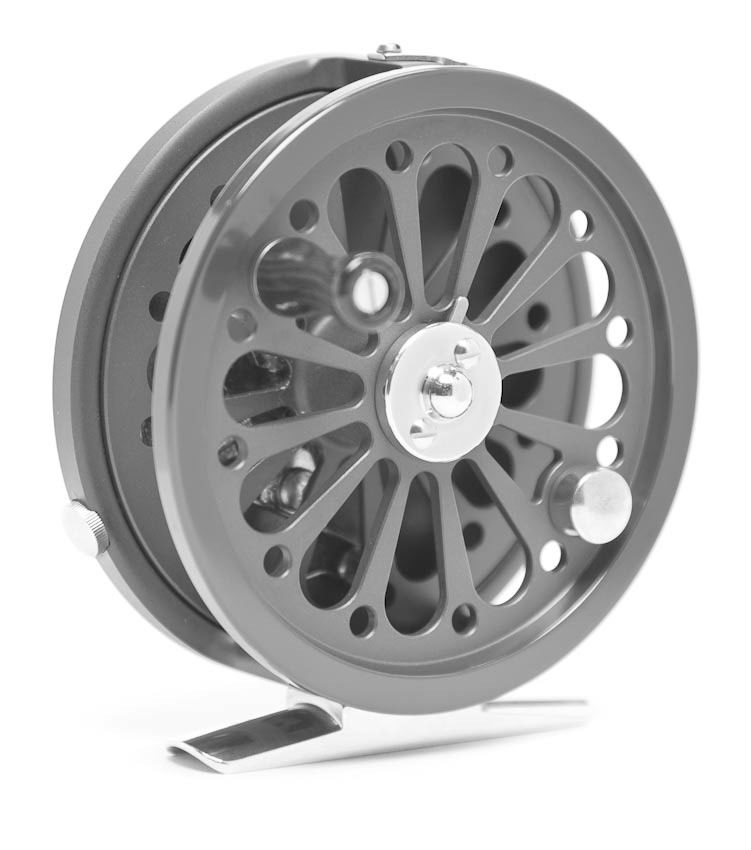
Red Truck’s Premium series ($399 single-handed 5-weight, 7-weight, and 8weight 9-foot rods, with a $450 7-weight 11-foot switch rod and a $450 13-foot 6inch Spey) is billed as the company “taking aim at the absolute best fly rods on the market, and working to surpass them.” I don’t know about the “surpassing” part of that claim, but the effort was clearly not a wasted one. The 9-foot 8-weight and 11-foot 7-weight switch rods I cast were smooth, powerful, and accurate. The four-piece sanded blanks have claret wraps tipped in gold, very good cork, expensive REC titanium recoil snake guides, and titanium-frame stripping guides that hold low-friction Nanolite rings. The reel seat components are gold anodized with a woven graphite reel seat insert, a look picked up by the Premium’s woven composite rod tube with gold-anodized cap and bottom.
Leland’s Red Truck Diesel series of rods ($299 single-handed 5-weight, 7weight, and 8-weight 9-foot models, with a $350 7-weight 11-foot switch rod and a $350 13-foot 6-inch Spey) are all fourpiece rods and on the surface are rather Spartan in appearance. But to my way of thinking, they match up well performance-wise with the Premium series, and cost $100 less. Blanks are unsanded, with smooth-fitting tip-over-butt ferrules. Claret wraps are tipped with silver, the cork is decent, and the reel seat on the 9-foot 5-weight I cast was a pewter-and-wood uplock with the rod specs laser printed on the butt. Rod cases are simple brushed aluminum screened with the Red Truck logo, but you still get the company’s patented bottle opener built into the screw cap. And did I mention there’s a 20-inch (or 30-inch for switch and Spey models) fish measuring “deliar” mark on the rod butt? You can also buy an extra tip for any model for $40.
I also got a chance to try a prototype 8-foot 6-inch 4-weight in a new, somewhat more expensive Leland series that’s apparently about six months away from introduction. If the other rods in the series are as nice, and if they don’t cost an arm and a leg — which would be surprising — this series should do very well.
Leland’s fly-reel offerings run the gamut from a very simple $59 Standard model to a $299 large arbor Premium model, both of which represent excellent value for the money. There’s nothing special here — there are scores of large-arbor disc-drag reels that look and perform similarly . . . which is to say they look and perform just fine. But with the company’s Red Truck Diesel and Leland Classic Trout and Vintage Brass models, the company has made a nice turn away from “contemporary” to what I’d call “contemporary retro.” They build on traditional and familiar designs while still offering something different.
Red Truck Diesel reels are Hardy Marquis look-alikes, with a bright exposed rim set against a pewter gray frame and spool and a click/pawl check similar to what Hardy uses. But where the Marquis is now offered only in salmon/steelhead sizes, the largest Diesel version is a 3.4-inch diameter 7/8-weight, about the size of a Hardy Princess. Models for 5/6weight and 3/4-weight lines are proportionately smaller and lighter. All three are nicely built, and at $199 are inexpensive for what they offer. They come in a nylon pouch, and extra spools are available.
Under the Leland brand, the company is offering two other updated retro-look models. The frame sides and drags of the Classic Trout series ($299) are reminiscent of Hardy Lightweights, though in a dark pewter-gray color similar to the old Orvis CFO. That surface coating, by the way, is Rhino Coat, similar to what’s used on scratch-resistant cooking pans, and is very tough. On the spool side, there’s an exposed rim for palming, and the face of the spool is relieved by teardrop-shaped cutouts like the original Ross reels from the late 1970s. With brass a reel seat foot, latch cover, and counterweight and a bright cocobolo handle, the look is at once vintage and contemporary.
The three Leland Vintage Brass models share the Rhino Coat gray finish, brass foot, and accents of the Classic Trout, but without rim-control spools. And in the lighter Sierra Nevada (3/4weight) and New Zealand Brown Trout (5/6-weight) versions ($350), the spool isn’t perforated, and there’s a brass screw holding it to the spindle, rather than a quick-release latch. The spool on the larger British Columbia Sea Run model ($375) is also attached with a brass screw, but is relieved with two rows of concentric holes and has two agatine handles, instead of one and a counterweight.
The Diesel and Classic models are both a bit heavier than other contemporary reels (the 2.9-inch diameter 5/6weight version in either model weighs 4.9 ounces) and the Vintage Brass is heavier still. But the smaller sizes would make a nice match with lots of traditional glass and bamboo rods and, in the larger sizes, to lighter switch and Spey rods.
Where’s All This Going?
I’ve heard some anglers worry that the retailers of private-label gear might not be around 10 years down the road, when repair or replacement is needed, but I’m not persuaded that’s an important issue. The Fly Shop, for example, has been around for longer than some of the industry’s manufacturing leaders, and Leland looks like it’s in for the long haul, as well. Seems to me the real question raised by private-label efforts such as those of The Fly Shop and Leland/Red Truck is whether a shop brand, at any price point, can compete against products from companies who specialize in designing and producing their own gear.
Apart from the loyalty many of us feel to U.S. made and branded products, there’s also clearly something very compelling, very reassuring, about products from a company that says, “We make it right here and control every feature and process, and we do it best because we’re not only good craftsmen, we’re also passionate about and understand fly fishing.” But offshore manufacturers are learning more and more about the end uses of what they make for others — about, for example, fly-rod action and the difference between what’s merely acceptable and what’s actually good. If the personnel from retailers interested in outside sourcing know what they want, are prepared to insist on it, and can pay both with money and time invested, there’s presumably no reason why a superior product can’t also be developed and sold by a fly shop.
Time and money for product development aren’t easy to find, of course, and most offshore fabricators require substantial orders that exceed most shops’ needs. That’s going to limit high-quality retail private-label efforts. Then again, some savvy operator who’s already bringing in hundreds of rods or reels or waders or angling shirts might figure it makes sense to bring in some of them without a label. There’s nothing to stop him from setting up an embroidery or decal operation here in the United States and distributing product to other shops. The importer gains price leverage by increasing his volume, and the purchasing shop gets a tested product with his or her own shop’s name on it. That sounds like a very normal, even predictable pattern of business evolution and growth.
Can long-established brands survive price-based competition from outsourcing and private labeling? They have so far, and there’s no reason to assume they won’t continue to do so, as long as they continue to lead the way by producing new and innovative products. They’ll be tested, of course, but there will always be folks who want to identify with the combination of tradition and product excellence represented by our top brands. And competition in business is a good thing, right? I have to figure that as anglers, we’ll benefit, however things play out.
Fly-Tying Product Reviews
By Bill Carnazzo
From time to time, I’ll review new or interesting fly-tying products at the end of either this column or “At the Vise.” My intention is to look at products that are practical and that make tying easier and more effective, or that are significantly different from others available on the market, with the potential to improve on-the water fly performance.
Umpqua U Series and C Series Hooks
Umpqua Feather Merchants has introduced two new lines of hooks: The U Series, which includes hooks for dry flies, nymphs, streamers, and saltwater flies (the series also includes a few specialty hooks for specific applications), and the C Series (in this case the “C” represents “competition”), which includes hooks for standard nymphs, Czech-style nymphs, streamers, and small 60-degree jig hooks, all of which are black and feature a wide gape and extra long barbless points.
The apparent purpose for the new U Series line is to offer tyers a somewhat lower-cost alternative for standard hook styles. Prices for packs of 25 vary from $5.75 to $6.75. I have tested most of the hooks in this series, and they appear to be of good quality and strength, with a microbarb that crushes easily with vise jaws. Virtually all standard styles are represented in the line. One potential issue with this line is the numbering system, which does not correspond to Umpqua’s Tiemco hook system. For example, the typical dry-fly hook designation within the regular system is “100,” while the corresponding hook in the U Series is designated “U002.” Given the lower cost offered by the U Series line, perhaps we tyers can learn to live with this terminology. Still, it would be helpful to have a comparability chart, say on the packaging, that would clarify the numbering.
The new C Series line, with uniformly wide gapes and long, barbless points, offers some new hook alternatives for tyers. The small 60-degree jig hooks, a style previously available only through a few importers, are easy to use in combination with Umpqua’s slotted tungsten beads, which slide easily onto the “jig” part of the hook. For those who like the hooking qualities of a jig-style hook, their ready availability for trout-fly applications (down to size 16) is a bonus. I have found them effective for short-line nymphing, although I have not used them for a long enough period to know whether they result in more landed fish. I like the increased gape, but there are some who contend that larger gapes lead to more foul-hooked fish. Price is a potential issue here. A package of 25 C-Series hooks costs $9.25.
Spirit River’s Tibetan Temple Dog Fur
I researched “temple dog” on the Internet and got numerous conflicting stories about what a temple dog is — it seems that no one really knows, other than it is notably furry. Whatever. The fly-tying material is soft, pliable, and easy to work with. Used for shucks on emerger patterns, it presents a simple alternative to Antron yarns or other shuck materials. It also works well in a dubbing loop to create an enticing action in the water when used on streamers. Interestingly, it retains its bulk in the water, unlike other materials, such as marabou, that tend to flatten against the hook. The hair comes in a variety of colors, including brown and olive for sculpin or crayfish imitations. Priced variably at $4.25 and $4.50, depending upon retailer.
The Ekich Bobbin
Faruk Ekich of Canada has creatively engineered a unique retractable bobbin that works well with all standard thread spools. It operates smoothly, using an internal, constant-force spring that provides sufficient tension to hold the bobbin in the down position and that allows for thread retraction when the bobbin is picked up for a subsequent tying step. There is definitely a learning curve associated with using this bobbin, but once mastered, it operates easily. On the potentially negative side, the bobbin costs approximately $100 and apparently must be purchased directly from Mr. Ekich. Also, once the constant-force spring’s tension is maximized (with approximately 24 inches of thread applied to the fly), it is necessary to perform a movement with your tying hand to release the tension so that the spring can resume its function. Still, beautifully designed, it is the Cadillac of bobbins.




